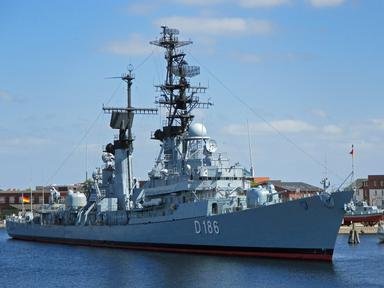Quiz Answer Key and Fun Facts
1. This class of boats were the last and largest diesel-electric attack submarines built by the Soviet Navy before the collapse of the Soviet Union.
2. Built between 1957-1963, this class of fourteen units were the first nuclear powered submarines in the Soviet Navy.
3. This class of diesel-electric submarine was the first built after World War II by the Soviets, and was the most numerous class of submarines in their fleet.
4. Designed to attack U.S. carrier task forces with cruise missiles, this class of Soviet submarines was built in two variants in the 1960s.
5. The largest submarines ever built, this class of ballistic missile boats were prominently featured in the Tom Clancy book, and subsequent film, "The Hunt for Red October".
6. A follow-on to the "November" class, these nuclear attack submarines were built in three variants from 1967-1991.
7. This class of diesel-electric boats, the "Foxtrots", were built between 1957-1983. How many units of the class were completed?
8. Designed in the late 1950s, this class of diesel-electric submarines carried nuclear-tipped cruise missiles, giving the Soviets a mobile nuclear strike capability.
9. This submarine class were the first true ballistic missile boats built by the Soviet Navy.
10. An advanced, deep-diving submarine class designed to seek and destroy American submarines, the "Sierra" class boats were built between 1979-1992. How many units were completed?
11. This class of Soviet attack submarines were known for having the fastest underwater speed of any production submarine ever built by any nation.
12. Known for their distinctive "hump-back" profile, this class of ballistic missile submarines were the main Soviet sea-based nuclear weapons platform since they were introduced in 1972.
13. Another large class of diesel-electric boats, there were more submarines of this Soviet design built by the Chinese than in the Soviet Union.
14. This class of nuclear submarines were the last cruise missile boats designed before the Soviet Union collapsed in 1991.
15. Coming as a complete surprise to NATO when introduced in 1985, this Soviet designed attack submarine remains a front-line unit with the Russian Navy.
Source: Author
Reamar42
This quiz was reviewed by FunTrivia editor
stedman before going online.
Any errors found in FunTrivia content are routinely corrected through our feedback system.
